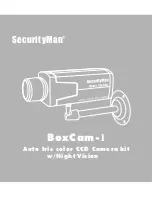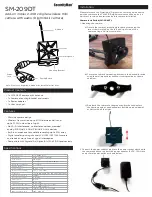
25
English
•
In very cold or very hot areas, including unheated buildings or outdoor
areas. If the temperature exceeds or falls below the operating range of the
smoke detector, then the smoke detector will not work properly. The tem
-
perature range for your smoke detector is 0 °C to 50 °C (32 °F to 120 °F).
•
In very dusty or dirty areas, dirt and dust can accumulate on the sensor
chamber of the smoke detector making it hypersensitive. Additionally, dust
or dirt can block openings to the sensing chamber and prevent the detector
from detecting smoke.
•
In the vicinity of fresh air vents or very draughty areas such as air conditio
-
ners, heaters or fans, the smoke can be driven away from smoke detectors.
•
Dead air spaces are often located at the tip of a pointed roof or in the
corners between ceilings and walls. Dead air can prevent the smoke from
reaching a detector.
•
In areas infested with insects: Insects can trigger a false alarm if they
penetrate into the sensor chamber of a detector. If insects pose a problem,
eliminate them before installing a detector.
•
Electrical "noise" of fluorescent lamps can trigger a false alarm in their
vicinity. Install smoke detectors at least 1.5 meters away from such lamps.
Never remove batteries to stop an alarm. Open a window or fan the air around
the detector to get rid of the smoke. The alarm switches off automatically once
the smoke is gone. If the fault alarm persists, try cleaning the detector as descri
-
bed in this user manual.
Do not stand near the detector when the alarm goes off. The alarm is loud to
wake you up in an emergency. Too much exposure to the alarm sound at close
proximity may damage your ears.
















































